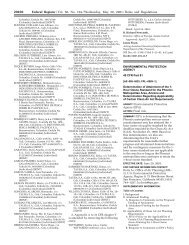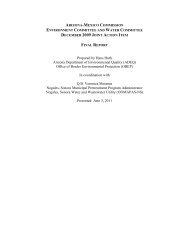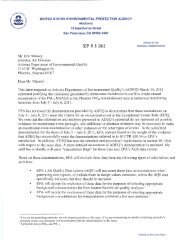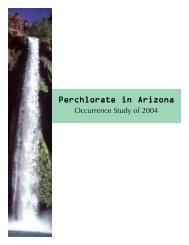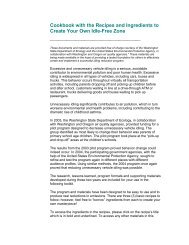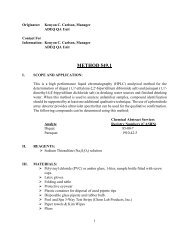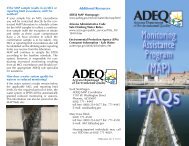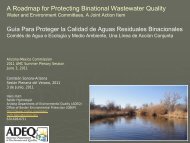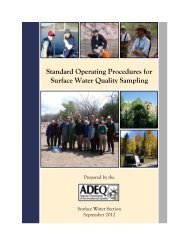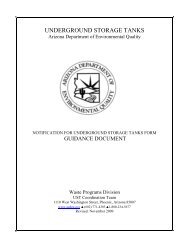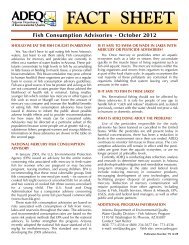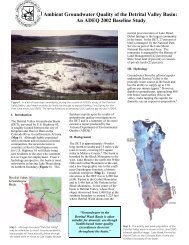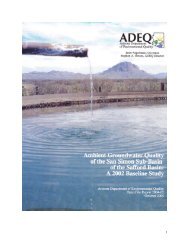General Generator Permit - Arizona Department of Environmental ...
General Generator Permit - Arizona Department of Environmental ...
General Generator Permit - Arizona Department of Environmental ...
Create successful ePaper yourself
Turn your PDF publications into a flip-book with our unique Google optimized e-Paper software.
e. Included in a permit to meet the requirements <strong>of</strong> A.A.C. R18-2-406.A.5.2. Affirmative Defense for MalfunctionsEmissions in excess <strong>of</strong> an applicable emission limitation due to malfunction shallconstitute a violation. When emissions in excess <strong>of</strong> an applicable emission limitationare due to a malfunction, the <strong>Permit</strong>tee has an affirmative defense to a civil oradministrative enforcement proceeding based on that violation, other than a judicialaction seeking injunctive relief, if the <strong>Permit</strong>tee has complied with the reportingrequirements <strong>of</strong> A.A.C. R18-2-310.01 and has demonstrated all <strong>of</strong> the following:a. The excess emissions resulted from a sudden and unavoidable breakdown <strong>of</strong>process equipment or air pollution control equipment beyond the reasonablecontrol <strong>of</strong> the <strong>Permit</strong>tee;b. The air pollution control equipment, process equipment, or processes were atall times maintained and operated in a manner consistent with good practice forminimizing emissions;c. If repairs were required, the repairs were made in an expeditious fashion whenthe applicable emission limitations were being exceeded. Off-shift labor andovertime were utilized where practicable to ensure that the repairs were madeas expeditiously as possible. If <strong>of</strong>f-shift labor and overtime were not utilized,the <strong>Permit</strong>tee satisfactorily demonstrated that the measures were impracticable;d. The amount and duration <strong>of</strong> the excess emissions (including any bypassoperation) were minimized to the maximum extent practicable during periods<strong>of</strong> such emissions;e. All reasonable steps were taken to minimize the impact <strong>of</strong> the excess emissionson ambient air quality;f. The excess emissions were not part <strong>of</strong> a recurring pattern indicative <strong>of</strong>inadequate design, operation, or maintenance;g. During the period <strong>of</strong> excess emissions there were no exceedances <strong>of</strong> therelevant ambient air quality standards established in Title 18, Chapter 2, Article2 <strong>of</strong> the <strong>Arizona</strong> Administrative Code that could be attributed to the emittingsource;h. The excess emissions did not stem from any activity or event that could havebeen foreseen and avoided, or planned, and could not have been avoided bybetter operations and maintenance practices;i. All emissions monitoring systems were kept in operation if at all practicable;andj. The <strong>Permit</strong>tee's actions in response to the excess emissions were documentedby contemporaneous records.3. Affirmative Defense for Startup and Shutdowna. Except as provided in Condition XI.E.3.b below, and unless otherwise providedAir Quality Control <strong>General</strong> <strong>Permit</strong> Page 11 <strong>of</strong> 62 Issue Date: July 19, 2011For <strong>Generator</strong>s Expires: July 19, 2016



